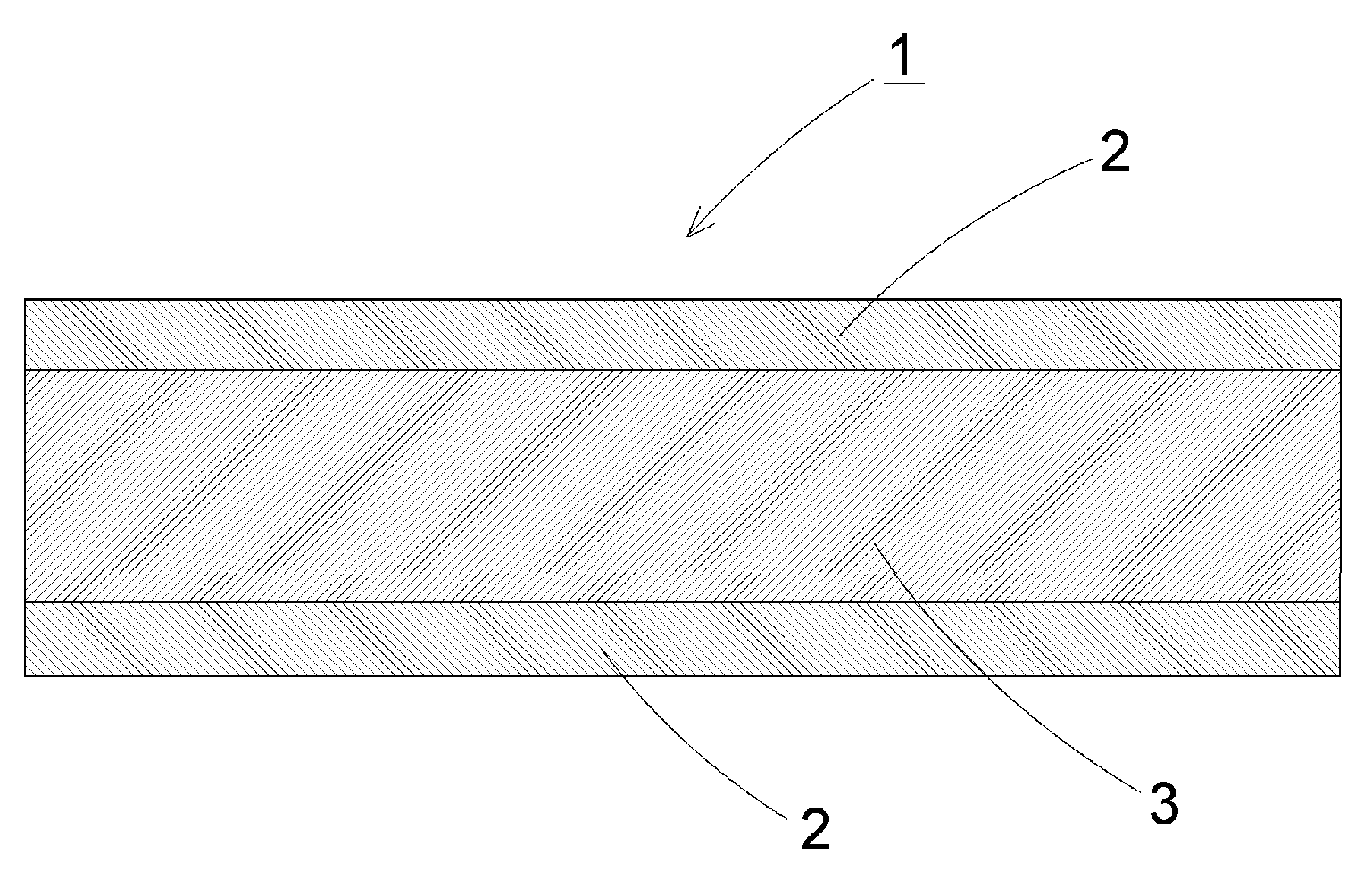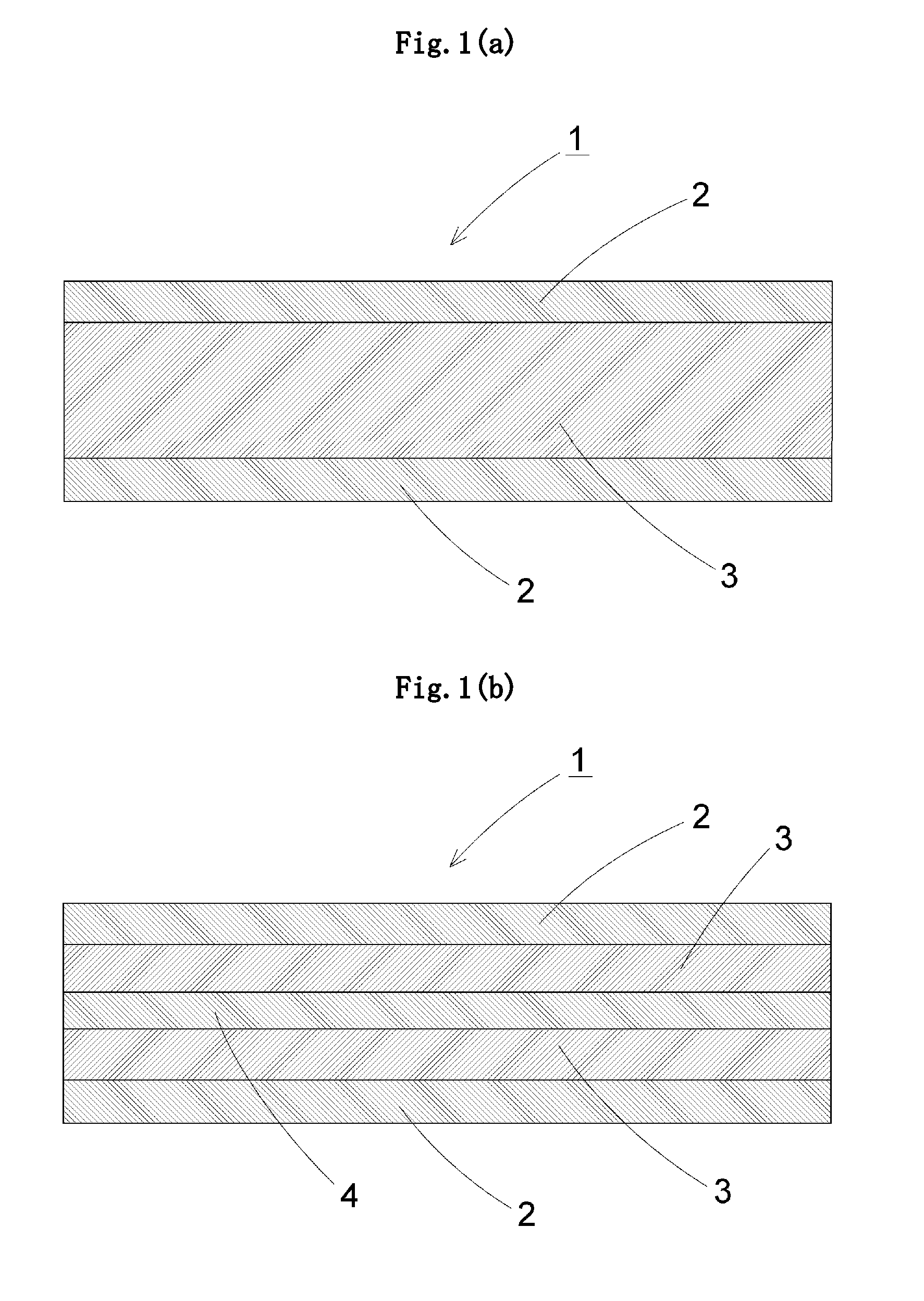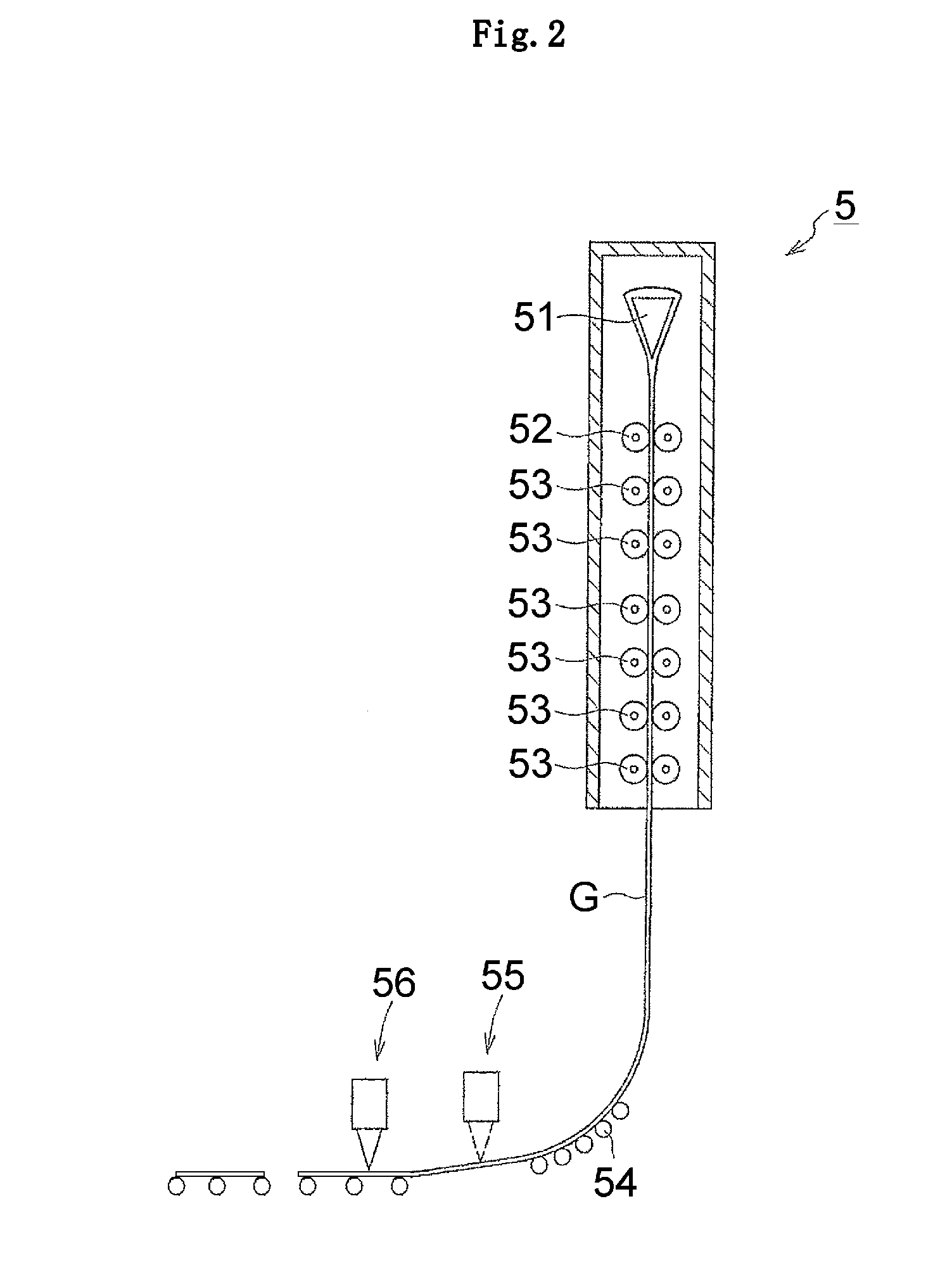Glass film laminate
- Summary
- Abstract
- Description
- Claims
- Application Information
AI Technical Summary
Benefits of technology
Problems solved by technology
Method used
Image
Examples
example 1
[0051]Prepared were two glass films each having a rectangular shape measuring 300 mm long by 300 mm wide by 100 μm thick. Used as each of the glass films was alkali-free glass manufactured by Nippon Electric Glass Co., Ltd. (product name: OA-10G, thermal expansion coefficient at 30 to 380° C.: 38×10−7 / ° C.) which was formed into a glass film by an overflow down-draw method and used as it was without polishing. Prepared as a transparent resin layer was a polycarbonate sheet having a rectangular shape measuring 300 mm long by 300 mm wide by 4 mm thick. The polycarbonate sheet was interposed between the two glass films and adhered there to by pressure-sensitive adhesive sheets, thereby manufacturing a glass film laminate having a three-layer structure. The measurement of the weight of the resultant glass film laminate showed 477 g.
example 2
[0053]Prepared were two glass films each having a rectangular shape measuring 100 mm long by 100 mm wide by 100 mm thick. The material of glass and the manufacturing method are the same as those in Example 1 described above. Prepared as a transparent resin layer was a polycarbonate sheet having a rectangular shape measuring 100 mm long by 100 mm wide by 10 mm thick. The polycarbonate sheet was interposed between the two glass films and adhered thereto by irradiating a UV curable resin interposed therebetween, thereby manufacturing a glass film laminate having a three-layer structure. The measurement of the weight of the resultant glass film laminate showed 125 g.
PUM
| Property | Measurement | Unit |
|---|---|---|
| Thickness | aaaaa | aaaaa |
| Pressure | aaaaa | aaaaa |
| Thickness | aaaaa | aaaaa |
Abstract
Description
Claims
Application Information
 Login to View More
Login to View More - R&D
- Intellectual Property
- Life Sciences
- Materials
- Tech Scout
- Unparalleled Data Quality
- Higher Quality Content
- 60% Fewer Hallucinations
Browse by: Latest US Patents, China's latest patents, Technical Efficacy Thesaurus, Application Domain, Technology Topic, Popular Technical Reports.
© 2025 PatSnap. All rights reserved.Legal|Privacy policy|Modern Slavery Act Transparency Statement|Sitemap|About US| Contact US: help@patsnap.com



